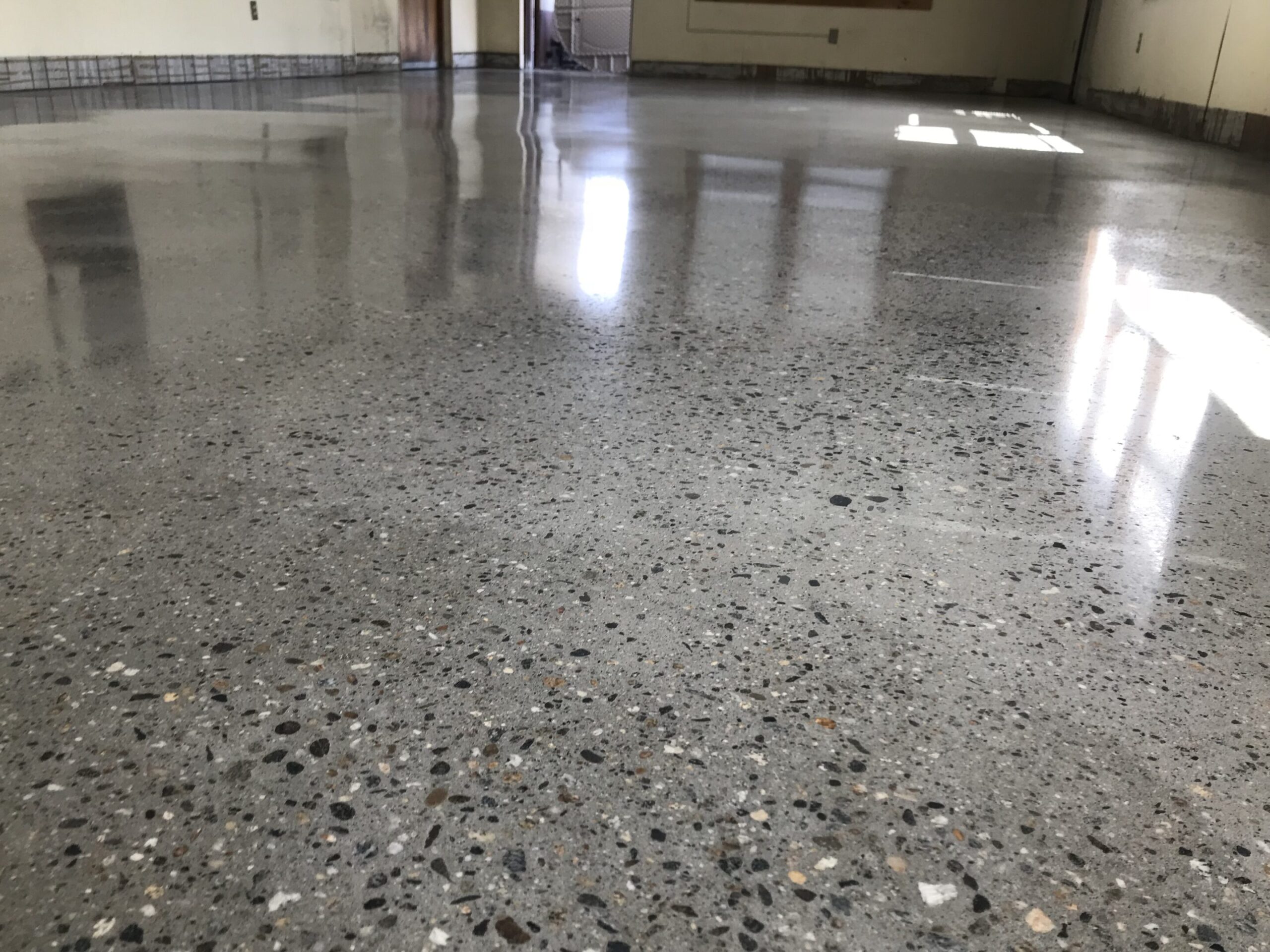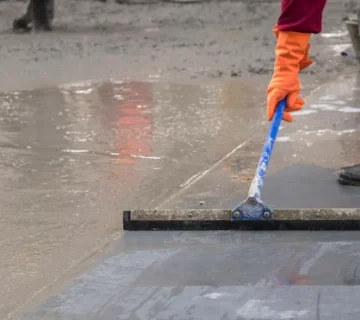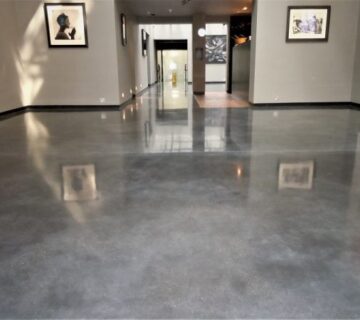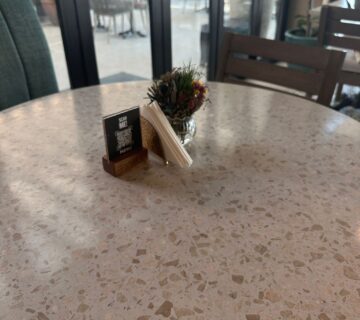Polished concrete is a strong, stylish, and modern flooring option that works well in both homes and commercial spaces. One of its biggest benefits is that it’s low maintenance compared to many other floors.
However, to keep it looking shiny and new, it still needs regular care. In this blog, we’ll share simple and expert tips for maintaining polished concrete in 2025 so your floor stays beautiful and lasts for years.
What Are the Best Practices for Maintaining Polished Concrete?
Daily Must Mop Routine
Use a microfiber dust mop regularly to remove the debris and dust. It keeps the surface safe from scratches and maintains its shine.
Weekly Damp Mopping
Damp mop should be done at least 1-2 times a week. A non-acidic and pH-neutral cleaner should be used for this purpose. Harsh chemicals damage the surface and affect the polished surface care.
Immediate Spill Cleanup
Immediately clean the surface when any liquid gets spilt over it. Not cleaning up the spills can cause damage and stains.
Avoid Abrasive Or Acidic Cleaners
Don’t use acidic products or rough scrubbers because they can cause dullness and damage. Gentle methods are best for preventing concrete damage.
Concrete Cleaning Schedule
Set a regular concrete cleaning schedule, including daily, weekly or monthly tasks. This is important for residential as well as commercial concrete maintenance.
Use Of Floor Protector Pads
Use protective pads under furniture legs. It saves the polished concrete floors from scratches and wear and tear.
How Often Should Polished Concrete Be Cleaned?
Residential Spaces
In homes, polished concrete is cleaned daily with a dust mop and weekly with a damp mop using a pH-neutral cleaner. A monthly deep clean helps keep the shine and surface strong.
Commercial Areas
In offices or shops, polished concrete should be cleaned daily due to heavy use. Damp mop 2–3 times a week and deep clean weekly or monthly to protect against wear and dullness.
Factors That Influence Cleaning Schedule
Cleaning of polished concrete depends on foot traffic, location, like kitchens or entryways, and whether it’s a home or business. More use means more cleaning.
Why Consistency Matters
If polished concrete is cleaned regularly, it stays shiny and damage-free. Skipping care can lead to dull, worn floors. Consistent cleaning keeps it looking new longer.
Which Cleaning Products Are Safe for Polished Concrete?
Use pH Neutral Non-Acidic Cleaners
PH-neutral cleaners are best for concrete shine protection and for preserving polish.
Examples of such cleaners include:
- Neutral floor cleaners
- Mild soap-based solutions
- Special concrete floor cleaners
Avoid These Harmful Cleaners
Some harmful cleaners damage the polished concrete surface and make it patchy or rough. These include:
- Bleach
- Ammonia-based cleaners
- Vinegar or acidic solutions
- Heavy degreasers or harsh chemicals
Market Options For Safe Cleaning
Many commercial concrete maintenance brands are available, which are made specially for polished concrete. These include:
- Tennant neutral floor cleaners
- Prosoco DailyKlean
- Ameripolish Rejuvenating Cleaner
Tips For Safe Use
- Always dilute the cleaner with water.
- Follow the label instructions.
- Use soft mop or auto-scrubbers.
- Rinse after every mop so that there is no residue.
Can You Prevent Scratches and Etching on Polished Concrete?
Here are some ways you can use to prevent scratches or etching on polished concrete:
Use Mats, Rugs, And Felt Pads
Place floor mats at all entryways to stop dirt and grit from coming inside. Use rugs in high-traffic areas to protect from scratches. Also, put felt pads under furniture legs so they don’t scratch the floor when moved.
Regular Dust Mopping
Use a microfiber dust mop every day to remove dirt and sand. These small particles can rub against the floor and cause etching. Regular dusting helps keep the floor shiny and clean.
Avoid Dragging Heavy Objects
Don’t drag heavy furniture or machines across the floor. This can leave deep scratches. Use wheels, sliders, or lifting tools when moving heavy items to avoid damage.
Preventive Maintenance Planning
Clean high-use areas more often. Always use pH-neutral (non-acidic) cleaners, as acidic ones can damage the floor. For commercial spaces, consider professional resealing or buffing every 6–12 months to keep the finish looking new.
Is Professional Maintenance Necessary for Polished Concrete Floors?
Yes, professional maintenance is sometimes important for polished concrete floors. Daily cleaning keeps the floor neat, but over time, the shine can fade or the surface can get small scratches.
In such cases, expert help is needed for re-polishing, resealing, or burnishing. These are special treatments that bring back the floor’s shine and protect it from further damage.
Professional service also helps the floor last longer and saves money by preventing big repairs. If your floor looks dull, has stains or scratches that won’t go away, or feels uneven, then it’s time to call a professional.
How Do You Extend the Lifespan of a Polished Concrete Floor?
- Clean the floor regularly with a dust mop and a damp mop.
- Use only pH-neutral cleaners; avoid harsh or acidic products.
- Place mats at entry points to stop dirt and grit from entering.
- Use felt pads under furniture to avoid scratches.
- Don’t drag heavy items across the floor.
- Keep indoor temperature and humidity stable to avoid surface stress.
- Schedule occasional professional polishing or resealing.
- Fix any spills or stains quickly to avoid long-term damage.
- Avoid using strong chemicals or rough cleaning tools.
- Follow a consistent cleaning and maintenance routine.
Wrapping Up: Why Is Polished Concrete Maintenance Worth the Effort?
Polished concrete maintenance is definitely worth the effort because it helps keep the floor shiny, strong, and looking new for years. With just simple care like regular cleaning and avoiding harsh products, you can protect your floor from damage and wear.
This not only keeps it beautiful but also saves money by reducing the need for big repairs or replacements. A little effort now means you keep your investment safe for the long run. In 2025, taking a proactive approach to floor care is the smart choice because easy steps today lead to long-lasting results tomorrow.








No comment